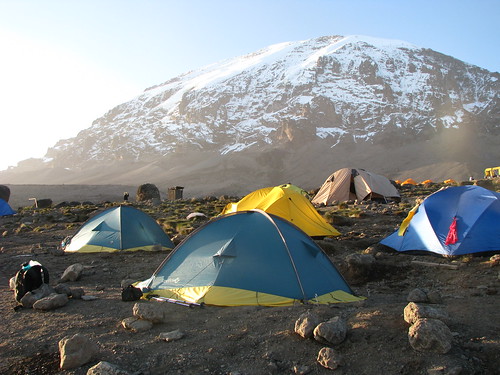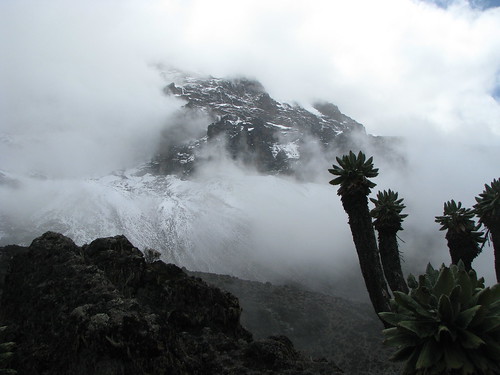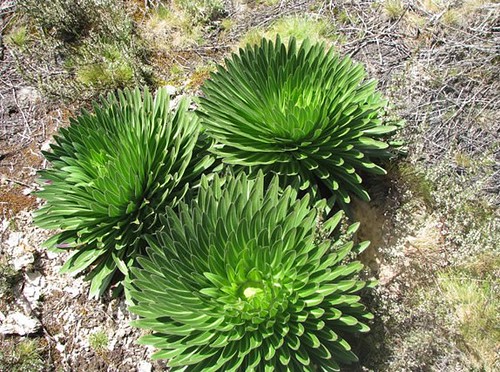
A morning at camp
The team is now over halfway done with their trek to the summit of Mt. Kilimanjaro in Tanzania. The journey began on Sunday 23 September as the team left Basecamp and hiked to Forest Camp. You can read all about their journey starting here.

A view of Mt. Kilimanjaro from the trail
Today’s part of the trek up Kilimanjaro takes the team back down in elevation, from 4,632 m to 3,962 m. Additionally, they will see another biome transition: alpine desert to moorland. A moorland biome is one that is also classified as a low precipitation region. This high altitude biome also has a high fluctuation in daily temperatures, soaring to high temperatures during the day and dropping to freezing at night.

Lobelia plants, a common site in the Moorland.
Today’s question asks the bloggers: Looking at different biomes thus far, which one was the most interesting to you and why? How was it similar or different from where you live, please explain.
Maddy
For me, the most interesting biome thus far has been the dry rain forest. The vegetation is so vivid and extremely diverse. Wildlife can always be heard, but not seen. The monkeys especially seem to make a game out of hiding from visitors and peeking out from around trees on occasion. The ground was extremely dusty and the air temperature hot and humid. This biome couldn’t be any more different from where I live in Boulder, Colorado! We have an extremely dry climate, and no monkeys outside of the zoo. We have very cold winters, and moderate summers. What made the rain forest so enjoyable for me was just how different it is from my home.
John
The most interesting biome so far to me has been the alpine desert zone. It is very striking to see how the plants diminish in numbers and size. I feel this area has become very harsh, which makes for a much more hostile environment in which organisms try to carve their living. The temperature range here is more dramatic with freezing occurring year-round in the evenings. Also, being on the rain shadow side of the mountain, the precipitation is low, leaving some of the plants to depend on the glacial melt that occurs seasonally. This biome reminds me very much of the area that I live in around Southern California. Not far from the coast, and into the foothills, the high desert begins. The plants there also experience a wide swing in daily temperatures as well as seasonal variations in precipitation. It’s a beautiful to be in when the flowers are blooming shortly after the first spring rains.
(Remember that Bob has separated from the main group to go on a different approach to the summit. You can read about his plans here).
